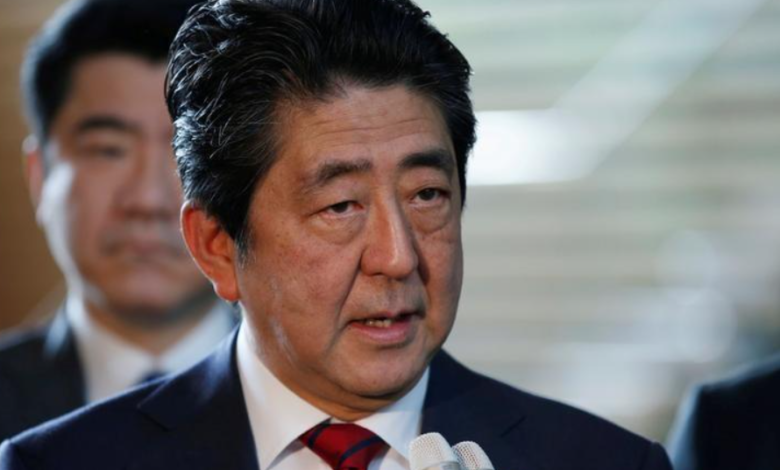A Cold War Relic and the Crime That Killed Shinzo Abe

Why the Japanese media has refused to identify the “religious group” that formed the motive for the killing must remain as speculation at this juncture, though it reflects very poorly on Japan’s status as a democratic nation.
When former Prime Minister Nobusuke Kishi formed a bond in the mid-1960s with Unification Church founder Sun Myung Moon over their shared anti-communist views, little did he know that he was sowing the seeds that would eventually take the life of his beloved grandson, Shinzo Abe.
It has been only a matter of hours since an unemployed resident of Nara city, Tetsuya Yamagami, shot and killed Japan’s longest-serving prime minister, and many details will still need to be fleshed out by journalists and historians, but the broad picture has come into focus, and this is an initial attempt to relate the basic story.
After his premiership of 1957-1960, former Class A War Criminal Nobusuke Kishi was a dissatisfied man. His successors as prime minister, Hayato Ikeda and Eisaku Sato, though they were close colleagues, had abandoned his attempts to revise the pacifist Article 9 of the Constitution and had slammed the brakes on remilitarization efforts, understanding clearly that the general public would simply not have it, and further initiatives could lead the Liberal Democratic Party (LDP) to lose power at the ballot box.
Kishi was embittered about being pushed out of office after only three years, and he blamed it mostly on communists.
When Kishi paid a visit to Washington DC in October 1970 and met with President Richard Nixon and National Security Advisor Henry Kissinger, he was quoted by the official memorandum as follows: “Mr. Kishi then commented that automatic extension of the Security Treaty had been accomplished smoothly and with very little opposition on the part of the Japanese people compared to ten years ago, when the Red Chinese had stirred up the sentiments of the Japanese.”
In Kishi’s view, “Red Chinese” were the motive force behind the anti-Security Treaty protests of 1960 which had forced him out.
It is perhaps not so surprising, then, that when Kishi was introduced to Unification Church founder Sun Myung Moon about five years later, their shared hardline anti-communist views allowed them to hit it off, and the connection would endure for generations.
So far, historians and public records give us only glimpses of what happened in the following decades.
A research paper published in 2001 by Richard Samuels, however, states that the Unification Church “built its Japan headquarters on land in Tokyo once owned by Kishi. By the early 1970s, a number of LDP politicians were using Unification Church members as campaign workers. While the politicians were required to pledge to visit the Church’s headquarters in Korea and receive Reverend Moon’s lectures on theology, it did not matter whether they were members of the Church. Actual Church members– so-called “Moonies”– were sent by the Federation to serve without compensation as industrious and highly valued campaign workers. In return, for many years the Church enjoyed protection from prosecution by Japanese authorities for their often fraudulent and aggressive sales and conversion tactics. Not incidentally, by the 1980s, Japan reportedly provided some four-fifths of Unification Church revenues worldwide.”
He adds that Shintaro Abe, Kishi’s son-in-law and Shinzo Abe’s father, “depended upon ‘Moonies’ in his election campaigns.”
While details remain spare, we do know that Shinzo Abe inherited these Moonie connections. When he first became prime minister in 2006, the younger Abe faced some criticism for sending “congratulatory cables to [Unification Church-related] ceremonies.”
Most recently, Shinzo Abe recorded a video message of congratulations for another Unification Church event held September 12 of last year.
The National Network of Lawyers Against Spiritual Sales issued an open protest letter on September 17 last year, protesting this appearance: “If Mr. Abe is to continue to be active as a politician, it is not a good idea to cooperate with and support events in collaboration with the Unification Church and its front organisations.”
As noted by Samuels over two decades ago, “for many years the Church enjoyed protection from prosecution by Japanese authorities for their often fraudulent and aggressive sales and conversion tactics.” It was precisely this issue that sparked the National Network of Lawyers Against Spiritual Sales to protest against Shinzo Abe’s support for the Unification Church.
And it seems to be this very issue that motivated Tetsuya Yamagami to target and kill Shinzo Abe.
Reporting from the Japanese mainstream media is now in agreement that Yamagami told investigators that he blamed a “religious group” (i.e. the Unification Church) for inducing his mother to donate so much money that it bankrupted the family. He initially prepared to kill a church leader, but gave up after deciding it was too difficult. Yamagami then turned his focus on Abe, whom he was aware promoted the church at some level.
What happened next has been well reported.
Why the Japanese media has refused to identify the “religious group” that formed the motive for the killing must remain as speculation at this juncture, though it reflects very poorly on Japan’s status as a democratic nation.
Michael Penn is the president of the Shingetsu News Agency and the author of the book Japan and the War on Terror: Military Force and Political Pressure in the US-Japanese Alliance (2014).
Source: This article was originally published on Shingetsu News Agency.






